Car companies head for showdown in Shanghai
Singapore’s car dealers look for partners at Auto Shanghai 2023 as Chinese brands square off against western nameplates
AS EUROPE’S top car brands strut their stuff on Chinese automakers’ home turf, a number of the Middle Kingdom’s up-and-coming automakers are using Auto Shanghai 2023 as the chance to signal their own westward expansion.
The likes of Lexus, Maserati, Porsche and Volkswagen chose Shanghai as the venue to show new global models for the first time, while export-minded local brands such as GWM, MG and Xpeng debuted key new global cars of their own. Meanwhile, startups HiPhi and Zeekr announced plans to take on the Europeans in their own market.
Once the biennial auto show’s five public days kick off on Saturday (Apr 22), organisers expect around one million visitors to stride through an exhibition that sprawls over nearly 3.9 million square feet. And with China now open to foreign visitors again, the show has regained its position as one the industry’s banner events.
“Shanghai now is probably one of the most important shows in the world,” Bernard Loire, the chief commercial officer of Maserati, told The Business Times (BT).
The Italian maker of sporty luxury machines saw Shanghai as the best setting to debut the Grecale Folgore, its first pure electric sport utility vehicle (SUV).
Apart from being the world’s largest car market, China leads in electric vehicle (EV) adoption. In 2022, the Middle Kingdom’s drivers snapped up 5.4 million EVs and 1.5 million hybrids, taking the share of so-called New Energy Vehicles (NEVs) to more than a quarter. The country bought two-thirds of the world’s EVs, and the industry expects sales there to expand 30 per cent this year.
“This is a platform for global innovation and you can see that everywhere in the show, but also already on the streets,” Loire said. “This country is really fast moving.”
Volkswagen also chose China for an important debut. It launched the ID.7, the new flagship of its electric car family. In a nod to how important technology is to consumers there, the relatively large EV showcased a new drive system that ekes out 700 km of range from its batteries, as well as a new display system and user interface.
But the Shanghai show isn’t purely a tech-fest. The sheer size of the China market compels automakers to launch vital new cars there. Porsche unveiled a new version of its single best-selling model, the Cayenne, with heavily revised styling, revamped engines and a new digital dashboard.
Lexus gave its new LM a global debut there, with the luxury multi-purpose vehicle ostensibly aimed at a market where many buyers are wealthy and prefer to be driven around in traffic snarls.
While established brands see the Shanghai show as a chance to woo Chinese drivers, this year’s event highlighted that domestic brands are increasingly keen to sell cars outside of their own market, especially to capitalise on an ongoing shift to electric cars.
Ambitious start-up brands such as HiPhi and Zeekr laid out plans to enter the European market, while others that already have a presence overseas launched new models targeted at foreign markets.
The increasing focus on export markets has made it more important for Singapore’s car distributors to attend. Top executives BT spied at Auto Shanghai include Wilfrid Foo (managing director of Jardine Cycle & Carriage’s Direct Motor Interests dealership group), Jasmmine Wong (CEO of Inchcape Singapore and Greater China), Melvin Goh (executive chairman of listed EuroSports Global) and Tracy Teo (marketing director of Komoco Motors and daughter of executive chairman Teo Hock Seng). Among them, their companies handle 15 brands in Singapore.
“There is greater interest in Auto Shanghai this year because of the wide offerings of electric cars by many Chinese OEMs. It is a good opportunity to view the showcase, especially after the hiatus due to Covid,” C&C’s Foo told BT, using the trade term Original Equipment Manufacturer to describe automakers.
Foo said that Singapore’s own pivot to electrification could give Chinese brands a competitive advantage in our market. “The wide range of Chinese offerings will naturally become an attractive factor for distributors and dealers to explore bringing them in to Singapore,” he said. “Many Chinese car manufacturers have also developed expertise through their years of experience and we see great quality improvements and technological advancements in their product offerings.”
Yet, not every export-focused company is a pure play EV maker. GWM, which recently rebranded itself from Great Wall Motor and reorganised its brand portfolio, effectively relaunched its various labels at Shanghai and unveiled more than 15 NEVs, the majority of them plugins.
The company is present in more than 170 markets and sees selling cars outside of China as a way to grow; its exports grew 22 per cent to a record 173,180 cars last year, versus 894,343 cars sold at home.
But most Chinese companies are still more focused on their increasingly crowded domestic market, according to Wutthinan Tiyaworanan, an industry observer who has been based in Beijing for two decades. Among those who do venture broad, few have an eye on right-hand drive markets like Singapore.
“Most of the up-and-coming ones in China, they’re still focused on their local market, maybe the European market,” said the Thai national, whose TiY YouTube channel focuses on electric cars. Companies that have reached a certain scale tend to be the ones that look further afield, he explained.
“GWM is not a small (company). In China, it’s already being seen as a top-tier brand and they’re one of the few that enter right hand drive markets,” he said. “They might do so for growth, and things are growing in Thailand and Malaysia.”
The company’s Haval SUV brand is in those markets, and so is Ora, a pure EV brand which is due to enter Singapore in June with Cycle & Carriage.
Foo, its importer’s MD, said whether or not Chinese brands proliferate in Singapore will ultimately depend on whether collective demand from right-hand drive markets is enough to entice automakers to build suitable cars. Whenever they do, expect to find Singaporean executives to go hunting in Shanghai.
China versus the world
China may be the world’s factory, but its own brands have yet to make a name for themselves as innovators in their own right, at least in the car world. Could these five cars at Auto Shanghai put their makers in the fast lane to global conquest?
GWM Tank 500 PHEV
Tank is GWM’s label for rugged 4x4s, which can be fuel guzzlers. The plug-in hybrid version of the imposing Tank 500 could address that, with a new petrol-electric powertrain designed to cut the imposing luxury SUV’s thirst.
The brand put one foot in the Thai market in March by collecting deposits for the Tank 500. Reports say it picked up 1,000 orders without disclosing the car’s price, which it will only reveal in May.
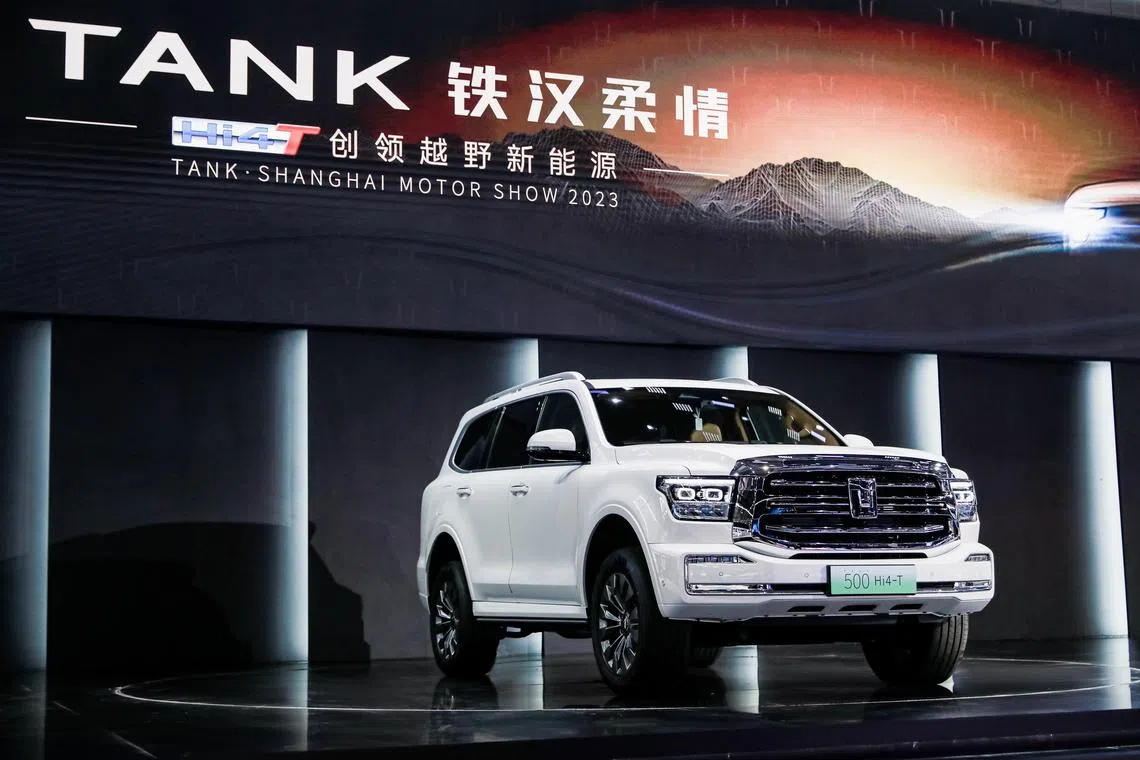
Haval B07
Like European car companies, GWM is working on a tool kit of technologies that it can apply to a plethora of models. The Haval B07, dubbed the Fierce Dragon Max at home, is the first recipient of its Hi4 plug-in hybrid system. It gives a claimed 105 km of pure electric range and delivers 279 horsepower from two motors and a 1.5-litre turbo petrol, all of GWM’s own design.
Haval will launch the B07 in China this year but the brand has already made in-roads into key right hand drive markets such as Australia, Malaysia, South Africa and Thailand. Could Singapore be far behind?
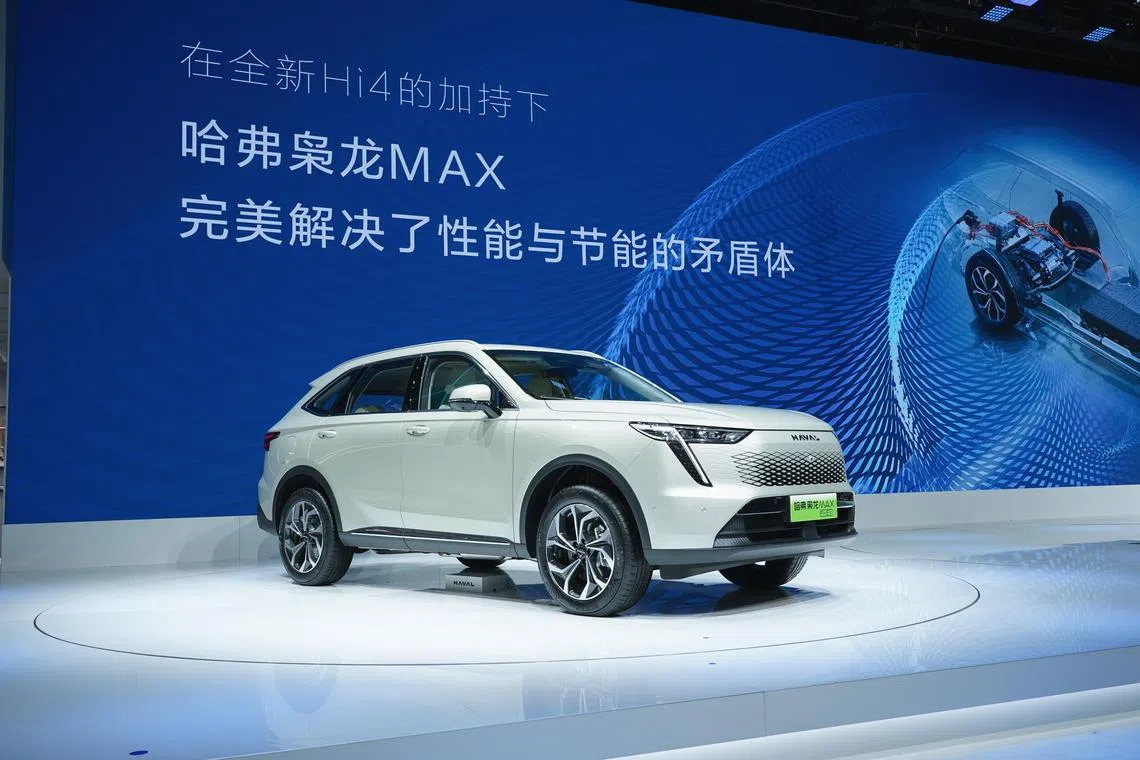
HiPhi Y
Shanghai-headquartered Human Horizons Technology didn’t exist six years ago, but already has a three-car model lineup. At Shanghai it showed the HiPhi Y, a family SUV with remarkable gull-winged, split rear doors.
It’s due for a European launch this year alongside an earlier model, the HiPhi X, which has gained type approval to go on sale there. The brand has right-hand drive versions in the works for Britain and its former colonies
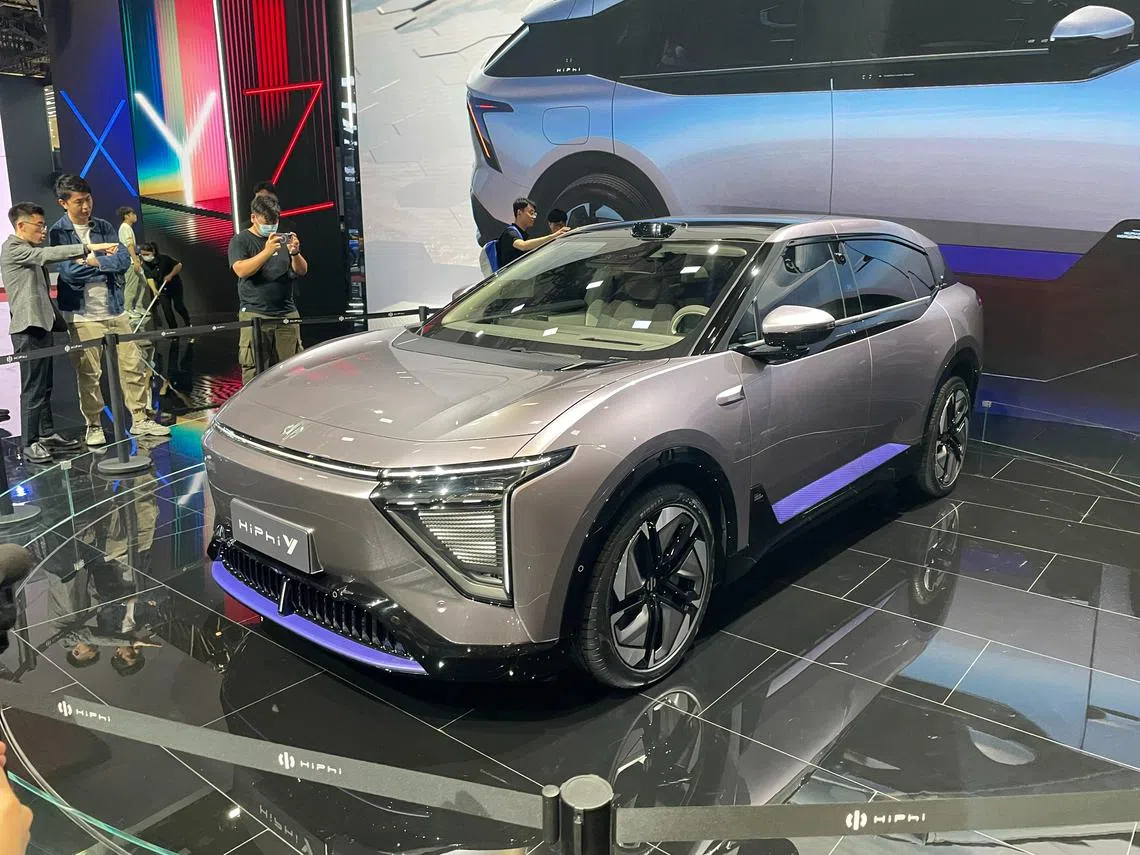
XPeng G6
While carmakers grapple with their first EVs, XPeng revealed its new G6 coupe-SUV and with it, a second-generation tech architecture that will underpin new models with more range, faster charging and better self-driving capabilities.
The G6 can cover 755 km on a single charge and XPeng’s own fast chargers can shove 300 km of range into the car in only 10 minutes. The company confirmed it will export the G6 but said it will have a different name outside of China.
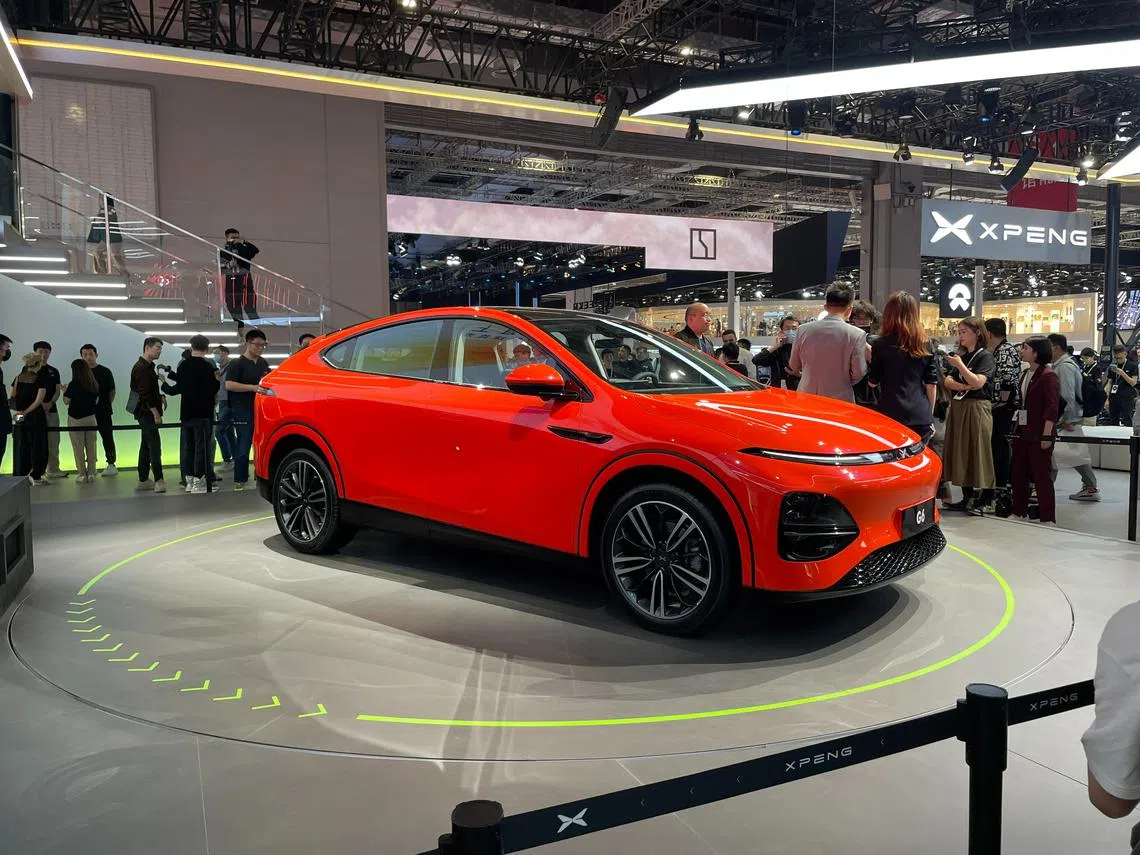
Zeekr
Zeekr did not debut a new car at Shanghai (unless you count the Zeekr X, an SUV that went on sale earlier this month), but said it would export cars to Sweden and the Netherlands by the end of this year.
The pure electric brand has kept schtum about right hand drive models, but its ambitions exemplify the China brands’ fearsome hunger for expansion. A sub-brand of Geely, it was only launched two years ago, sold 81,000 cars last year and expects to sell 650,000 in 2025.
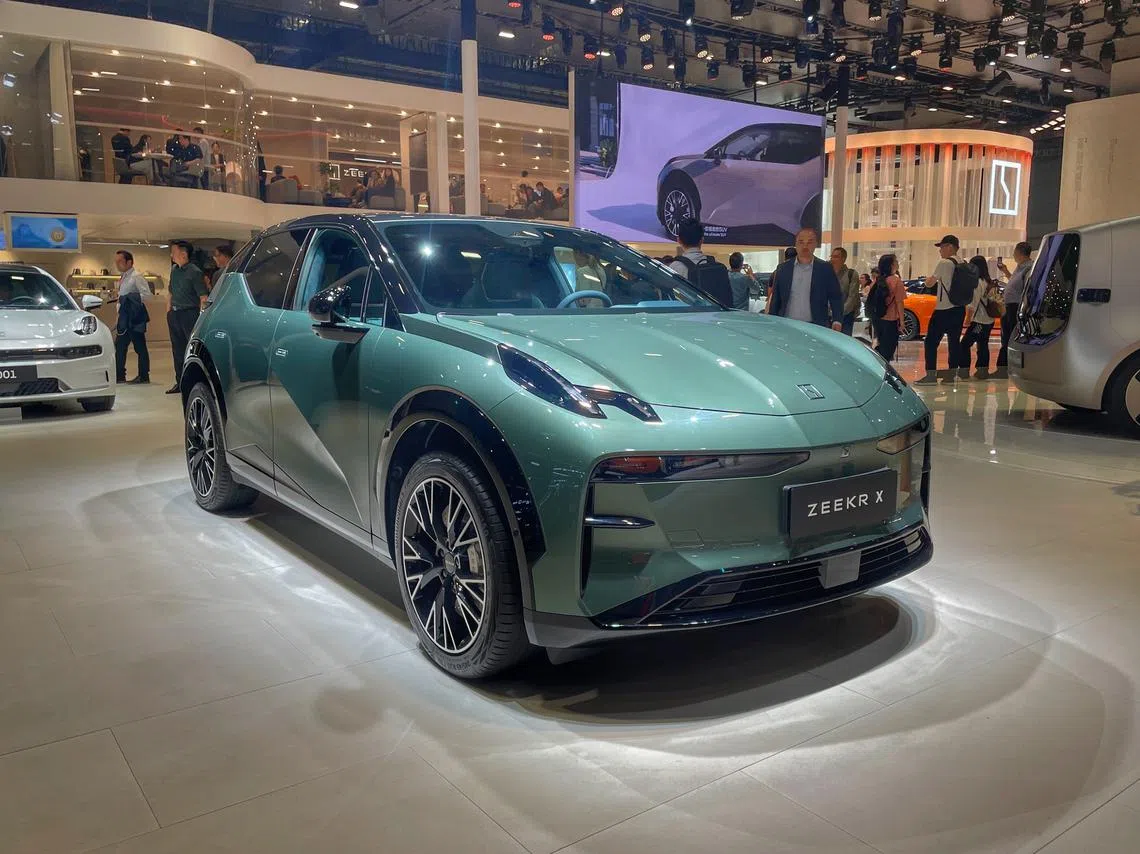
Decoding Asia newsletter: your guide to navigating Asia in a new global order. Sign up here to get Decoding Asia newsletter. Delivered to your inbox. Free.
Copyright SPH Media. All rights reserved.

